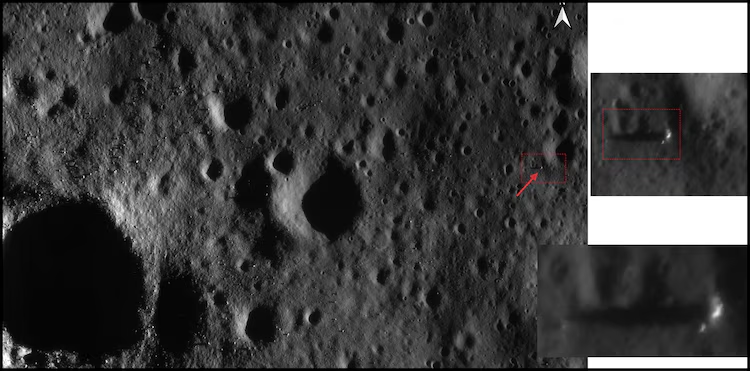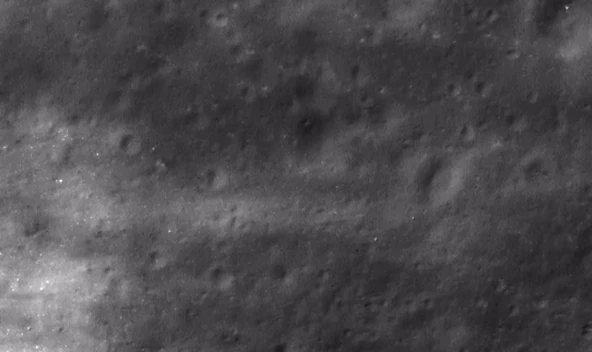The timing of the image capture was crucial, as it occurred during a period when the sun’s elevation was low, casting long, dramatic shadows across the moon’s landscape.
In Short
- Chandrayaan-2 orbiter had successfully captured high-resolution images
- The images were taken on March 16, 2024
- It was taken using the orbiter’s high-resolution camera
Japan’s Slim lander was discovered to be resting on the Moon through the analysis of data given by Chandrayaan-2 by independent researcher Chandra Tungathurthi.
High-resolution photos of Japan’s Smart Lander for Investigating Moon (SLIM) at rest on the moon have been successfully taken by the Chandrayaan-2 spacecraft. Using the orbiter’s high-definition camera—which has an amazing pixel resolution of 16 cm per pixel—the pictures were captured on March 16, 2024. The Indian researcher presented three different viewpoints on the location’s context.
It was important to time the photo shoot around a moment when the sun was low in the sky, creating lengthy, dramatic shadows on the lunar surface. This enhanced the visual depth of the photos while bringing attention to the SLIM lander’s surroundings and the lunar surface’s outlines and peculiarities.
The fact that SLIM, the Japan Aerospace Exploration Agency’s (JAXA) first successful moon landing, made it through its third hard lunar night before is evidence of its sturdy engineering and construction.

Due to its ability to land with extreme precision, the lander—dubbed the “moon sniper”—had first landed south of the lunar equator, close to the Shioli crater.
The Chandrayaan-2 photos offer important information about the state and precise location of SLIM, supporting current research and future mission planning. The fact that these photos were successfully taken demonstrates the capability of Chandrayaan-2’s equipment as well as the tactical benefit of having such cutting-edge equipment in lunar orbit.
In general, it might be laborious to search through raw data for complete information. The researcher has created a custom toolkit specifically designed for analyzing ISRO data in order to expedite this process. With the help of this toolbox, orthographic images can be created for analysis by smoothly integrating image data with location information.
This method, like the services offered by NASA’s LRO, makes efficient data interpretation easier.

“Among the best cameras for observing the lunar surface is ISRO’s OHRC. After closer inspection, I found that the aforementioned image had an astounding 16 cm resolution, indicating very high-quality images. He continued, “This improved resolution promised to yield important insights into lunar features and occurrences.
India and Japan are gearing up for more joint missions, like the forthcoming Lunar pole Exploration (LUPEX) mission, which will investigate the moon’s south pole area, which is thought to include water ice in its craters that are constantly shadowed.
After getting an image from the lander three months after it touched down on the moon, Japan’s space agency said on Wednesday that the lander had survived a third icy lunar night.
JAXA stated on the social media network X that even with frequent, severe temperature swings, the essential features of SLIM continue to operate. The organization declared that it would keep a careful eye on the lander’s decline.
Read Also: December saw 7.63 Crore Mutual fund SIP Accounts Opened; Why are Investors flocking to them?








